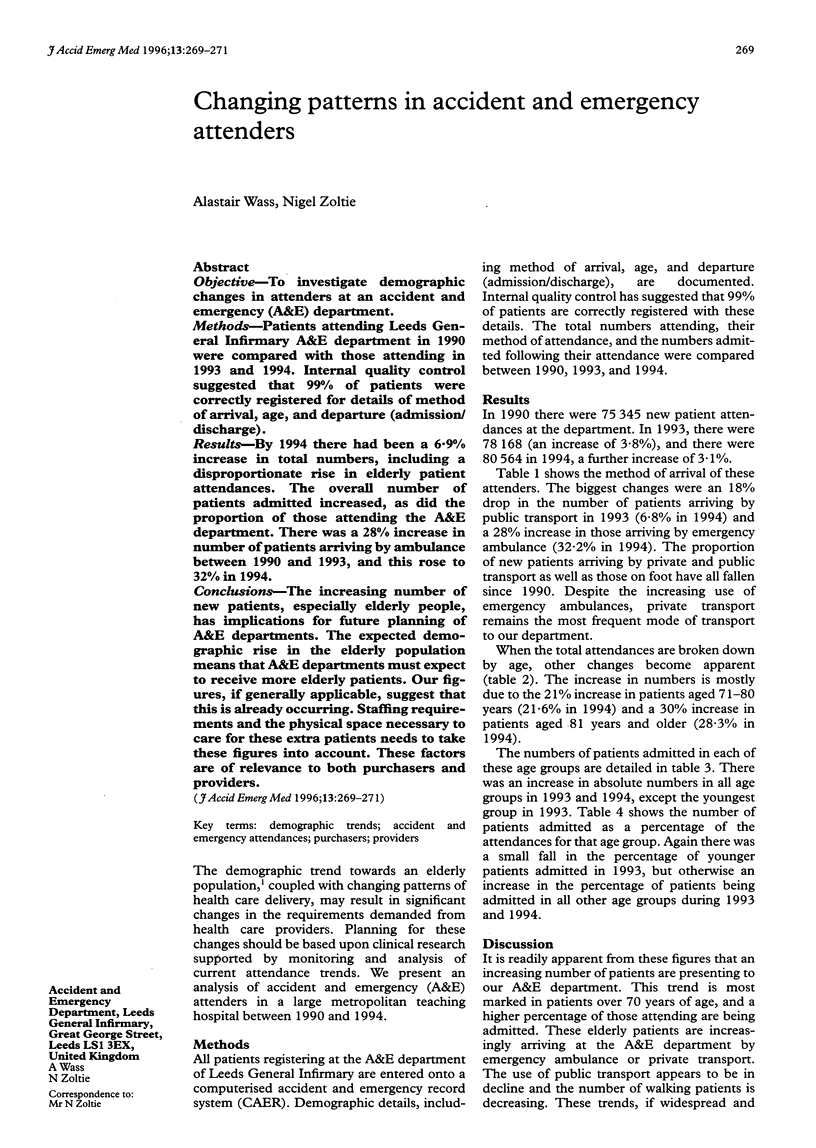Abstract
OBJECTIVE: To investigate demographic changes in attenders at an accident and emergency (A&E) department. METHODS: Patients attending Leeds General Infirmary A&E department in 1990 were compared with those attending in 1993 and 1994. Internal quality control suggested that 99% of patients were correctly registered for details of method of arrival, age, and departure (admission/discharge). RESULTS: By 1994 there had been a 6.9% increase in total numbers, including a disproportionate rise in elderly patient attendances. The overall number of patients admitted increased, as did the proportion of those attending the A&E department. There was a 28% increase in number of patients arriving by ambulance between 1990 and 1993, and this rose to 32% in 1994. CONCLUSIONS: The increasing number of new patients, especially elderly people, has implications for future planning of A&E departments. The expected demographic rise in the elderly population means that A&E departments must expect to receive more elderly patients. Our figures, if generally applicable, suggest that this is already occurring. Staffing requirements and the physical space necessary to care for these extra patients needs to take these figures into account. These factors are of relevance to both purchasers and providers.
Full text
PDF


Selected References
These references are in PubMed. This may not be the complete list of references from this article.
- Burdett-Smith P., Rowland K., Woodhouse K. W., Maitra A. K. A comparative study of the injury profile of the elderly patients in an accident and emergency department. Arch Emerg Med. 1989 Sep;6(3):189–192. doi: 10.1136/emj.6.3.189. [DOI] [PMC free article] [PubMed] [Google Scholar]
- Castillo P. A., Pousada L. Emergency services use by elderly individuals. Clin Geriatr Med. 1993 Aug;9(3):491–497. [PubMed] [Google Scholar]
- Dove A. F., Dave S. H. Elderly patients in the accident department and their problems. Br Med J (Clin Res Ed) 1986 Mar 22;292(6523):807–809. doi: 10.1136/bmj.292.6523.807. [DOI] [PMC free article] [PubMed] [Google Scholar]
- Eliastam M. Elderly patients in the emergency department. Ann Emerg Med. 1989 Nov;18(11):1222–1229. doi: 10.1016/s0196-0644(89)80064-2. [DOI] [PubMed] [Google Scholar]
- Gerson L. W., Shvarch L. Emergency medical service utilization by the elderly. Ann Emerg Med. 1982 Nov;11(11):610–612. doi: 10.1016/s0196-0644(82)80202-3. [DOI] [PubMed] [Google Scholar]
- Hayward J. Purchasing clinically effective care. BMJ. 1994 Oct 1;309(6958):823–824. doi: 10.1136/bmj.309.6958.823. [DOI] [PMC free article] [PubMed] [Google Scholar]
- Wofford J. L., Schwartz E., Byrum J. E. The role of emergency services in health care for the elderly: a review. J Emerg Med. 1993 May-Jun;11(3):317–326. doi: 10.1016/0736-4679(93)90053-a. [DOI] [PubMed] [Google Scholar]


